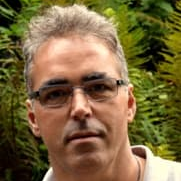Persistent Organic Pollutants (POPs) in the Environment
A special issue of Geosciences (ISSN 2076-3263).
Deadline for manuscript submissions: closed (15 June 2020) | Viewed by 734
Special Issue Editors
Interests: soil and water pollution; water supply; green infrastructures; remote sensing; machine learning
Special Issues, Collections and Topics in MDPI journals
Interests: soil-water-plant system; waste management and recycling
Special Issues, Collections and Topics in MDPI journals
Special Issue Information
Dear Colleagues,
The overall goal of this Special Issue of Geosciences is to advance in the knowledge of the space-time dynamics of persistent organic pollutants (POPs) in the environment. POPs are chemical compounds recognized by the World Health Organization (WHO) as a global concern due to their great capacity for dispersion, ubiquity, persistence in the environment, their potential bio-accumulation and bio-magnification, and negative effects on health and ecosystems. The initiatives to globally reduce the presence of POPs is the origin of The Stockholm Convention on Persistent Organic Pollutants. It includes an extensive list of pesticides, industrial chemicals and unintentionaly produced chemical, in order to take proper measures to eliminate or restrict their production.
From the point of view of geosciences, the study of the space-time dynamics of POPs is of great scientific interest and utility to improve the health of people and the environment. Atmosphere, surface water, groundwater or soil may be involved in the processes of transport and transformation of POPs. For this reason, studies focused on identifying the origin of the pollution sources, the transportation ways and temporal evolution are welcome. The employment of geospatial analysis methods and computer models is of great interest. This special issue aims to cover, without being limited to, the following areas:
- Identification of punctual/diffuse pollution sources and their association with human activities
- Pollutants transport processes
- Quantitative mapping methods
- Hazard and risk assessment
- Spatial-temporal dynamics assessment and modelling
Dr. Ignacio Melendez-Pastor
Dr. Jose Navarro-Pedreño
Guest Editors
Manuscript Submission Information
Manuscripts should be submitted online at www.mdpi.com by registering and logging in to this website. Once you are registered, click here to go to the submission form. Manuscripts can be submitted until the deadline. All submissions that pass pre-check are peer-reviewed. Accepted papers will be published continuously in the journal (as soon as accepted) and will be listed together on the special issue website. Research articles, review articles as well as short communications are invited. For planned papers, a title and short abstract (about 100 words) can be sent to the Editorial Office for announcement on this website.
Submitted manuscripts should not have been published previously, nor be under consideration for publication elsewhere (except conference proceedings papers). All manuscripts are thoroughly refereed through a single-blind peer-review process. A guide for authors and other relevant information for submission of manuscripts is available on the Instructions for Authors page. Geosciences is an international peer-reviewed open access monthly journal published by MDPI.
Please visit the Instructions for Authors page before submitting a manuscript. The Article Processing Charge (APC) for publication in this open access journal is 1800 CHF (Swiss Francs). Submitted papers should be well formatted and use good English. Authors may use MDPI's English editing service prior to publication or during author revisions.
Keywords
- persistent organic pollutants
- pesticides
- pollution sources
- pollutants transport
- quantitative mapping methods
- spatial-temporal dynamics: soil and water pollution
- chemical fate and transport
- geospatial technologies
- remediation technologies






